日韓等國外近期漢學出版物(十九)
2016?4——2016?9
1、箜篌の研究:東アジアの寺院荘厳と弦楽器
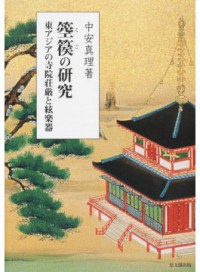
時 間:2016年8月
作 者:中安真理 著
出版單位:京都:思文閣出版
內容簡介
序章
コト形弦楽器とは/風で鳴るコト形弦楽器「ウィンドハープ」/箜篌三種/本書の構成
第一章 浄土の音
風で動いて鳴るもの/自然に鳴るもの/自然に鳴る箜篌/箜篌の特殊性/美術作品にみる自然に鳴る音楽の表現
第二章 日本の美術作品にみる箜篌
豎箜篌/鳳首箜篌/金剛箜篌
第三章 臥箜篌―日本の仏教建筑を荘厳するコト形弦楽器の源流
先行研究/箜篌の発生/箜篌の形態/フレットをもつコトの図像資料/文獻史料にみるフレットをもつコト/朝鮮半島の玄琴の起源
第四章 日本における箜篌の漢字表記と雅楽寮での使用
漢字表記と助數詞による區別の有無/雅楽寮での使用
第五章 仏教建筑を荘厳する「箜篌」の資料分析
文獻史料にみる「箜篌」/美術資料にみる「箜篌」/考古數據にみる「箜篌」―鳥羽離宮跡出土コト形木制品―
第六章 中國?日本における「風琴」「風箏」
中國の詩文にみる「風琴」「風箏」/「風箏」は凧か/唐代の史料にみる「風箏」/日本における「風箏」
第七章 仏教建筑を荘厳する寶鐸の存在と音の意義
「鐸」の字義/インドの寶鐸/中國の寶鐸とその音/自鳴する様々な體鳴楽器の音の意味/浄土の寶鐸/日本の寶鐸と鐘
終章
2、漢魏晉南北朝時代の都城と陵墓の研究
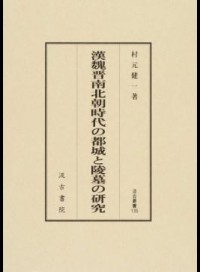
時 間:2016年8月
作 者:村元健一 著
出版單位:東京:汲古書院
內容簡介
第一篇 漢の都城と陵墓
第一章 前漢長安の変容
第二章 前漢皇帝陵の再検討
第三章 漢諸侯王墓の変遷と諸侯王
第四章 前漢諸侯王墓と諸侯王の自殺
第五章 后漢【ラク】陽城の南宮と北宮の役割について
第六章 后漢皇帝陵の造営
第七章 后漢の謁陵儀禮
第二篇 魏晉南北朝期の都城と陵墓
第一章 曹魏西晉の皇帝陵
第二章 東晉南朝の皇帝陵の変遷
第三章 北魏永固陵の造営
第四章 北朝鄴城の復原研究
第五章 北斉の晉陽
第六章 北朝長安の都城史上の位置づけについて
第三篇 復都制と宮城の変遷
第一章 中國復都制における洛陽
第二章 魏晉南北朝時代の宮城の変遷
第三章 隋の大興、洛陽の二つの宮城
終章
3、「満洲國」公的機關収蔵図書目録(一套9冊)
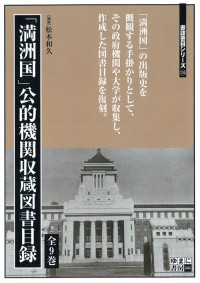
時 間:2016年8月
作 者:松元和久 編
出版單位:東京:ゆまに書房
內容簡介
「満洲國」の政府機關や大學は、參考資料として多數の図書?雑志を収集し、職員や學生の閱覧に供するために、それぞれ蔵書目録を作成していた。本シリーズは、こうした目録を収集?復刻したものである。日本人の職員?學生が多數を占めたために、蔵書の中心も日本語図書であった。そのため、本シリーズを利用することで、日本で蓄積された出版文化が、「満洲國」において如何に活かされたかを知る一端となるだろう
4、「満洲移民」の歴史と記憶:一開拓団內のライフヒストリーからみるその多聲性
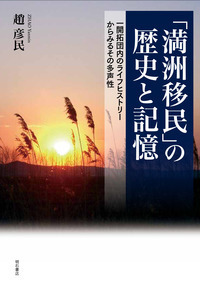
時 間:2016年7月
作 者:趙彥民 著
出版單位:東京:明石書店
內容簡介
序章
第一章 満洲移民事業の歴史――展開?送出?崩壊?戦后
第二章 長野県における満洲移民送出のプロセスと地域的基盤――大正期から一九四五年までを中心に
第三章 満洲開拓をめぐる集団的記憶――長野県第七次中和鎮信濃村開拓団を事例として
第四章 フィールドワークの記録
第五章 満洲開拓をめぐる個々人の記憶と語り――第七次中和鎮信濃村開拓団を中心に
第六章 満洲開拓をめぐる現地社會の人々の記憶と語り
第七章 戦后中國の殘留日本人政策
第八章 中國殘留日本人の戦后體験――第七次中和鎮信濃村開拓団を事例として
第九章 満洲開拓をめぐる「記憶の場」の形成と継承――戦后の日本社會における集団引揚者の事例を中心に
終章
5、総力戦體制下の満洲農業移民
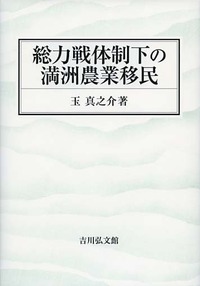
時 間:2016年7月
作 者:玉真之介 著
出版單位:東京:吉川弘文館
內容簡介
序章
課題と研究史
戦時農政の転換と満洲農業移民
日中戦爭の開始と満洲農業移民――移民から拓殖一元化へ
満洲農業移民の全貌/分村移民の実態
「ブロック內食糧自給態勢」と開拓増產一元化
「満洲移民」から「満蒙開拓」へ――日中戦爭開始后の日満農政一體化
戦時農政の転換と日満農政研究會
総力戦下の「ブロック內食糧自給構想」と満洲農業移民
満洲產業開発政策の転換と満洲農業移民
技術?制度の移転と交流
結語
6、戒厳令下の文學——臺灣作家.陳映真文集

時 間:2016年4月
作 者:陳映真 著,間ふさ子、丸川哲史 翻譯
出版單位:東京:せりか書房
內容簡介
臺灣文學史上、きわめて重要な作家、陳映真―厳しい弾圧の時代を生き抜き、八年にわたる獄中生活を送ったのちも旺盛な文筆活動を展開、臺灣に住む底辺の人々の悲劇や、多國籍企業の実態とそこに働く人々の心情、白色テロの犠牲者たちなどを描いた沖撃的な作品をつぎつぎと世に問うた。その全貌(小說+散文)を紹介した本邦初の単獨文集。
作者簡介
陳映真,現代中國語文學世界における重要な作家、思想家。本名は陳永善、別のペンネームとして許南村がある。臺北県鸴歌鎮の人。1937年臺灣竹南に生まれ、淡江文理學院外文系を卒業する。中學の英語教師、また多國籍企業の社員として働いたこともあった。1959年に第一作目の小說『麺攤(麺屋臺)』を発表、1968年「マルクス?レーニン共產主義、魯迅など左翼の書籍、及び共產黨宣言などを読む読書グループを組織した」といった罪名により逮捕され、緑島に送られるも、1975年には特赦により釈放される。
翻譯者簡介
間ふさ子,2005年九州島大學大學院比較社會文化學府博士后期課程退學。現在、福岡大學人文學部東アジア地域言語學科教授。専攻は中國文學。
丸川哲史,1963年和歌山市生まれ。2002年一橋大學大學院言語社會研究科博士課程修了。現在、明治大學政治経済學部/教養デザイン研究科教授。専攻は東アジアの思想?文化(本データはこの書籍が刊行された當時に掲載されていたものです)。
7、Middle Kingdom and Empire of the Rising Sun: Sino-Japanese Relations, Past and Present
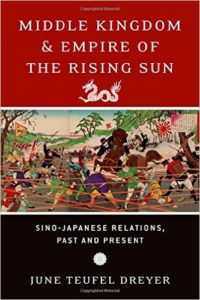
時 間:2016年8月
作 者:June Teufel Dreyer
出版單位:Oxford: Oxford University Press
內容簡介
Section One
Chapter One: Getting to the Present
Chapter Two: China, Japan, and the Coming of the West, 1835-1945
Chapter Three: Wary Engagement: 1945-1969
Chapter Four: The Tortuous Path to Normalization: 1969-1972
Chapter Five: The Golden Age of Sino-Japanese Relations, 1972-1989
Chapter Six: Tarnished Gold, 1989-2006
Chapter Seven: Contradictions Deepen: 2006-2015
Section Two
Chapter Eight: Economic Rivalry
Chapter Nine: Mutual Military Apprehensions
Chapter Ten: Taiwan Between Two Powers
Section Three
Chapter Eleven: Conclusions
8、Celestial Masters: History and Ritual in Early Daoist Communities
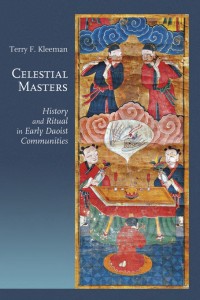
時 間:2016年7月
作 者:Terry F. Kleeman
出版單位:Cambridge: Harvard University Press
內容簡介
Introduction
I. History
1. The Founding of the Celestial Master Church: External Evidence
2. The Founding of the Celestial Master Church: Internal Documents
3. After the Fall: Daoism in the Third Century
4. Daoism under the Northern and Southern Dynasties
II. Ritual and Community
5. Ritual Life
6. The Daoist Citizen
7. The Novice
8. The Libationer
Epilogue
9、Mirage: An Anonymous Nove

時 間:2016年6月
作 者:translated by Patrick Hanan
出版單位:Hong Kong: The Chinese University Press
內容簡介
本書為中國古典小說《蜃樓志》之英譯
First published anonymously in 1804—its author remains unknown—Mirage is set in Guangzhou (Canton), some decades before the city was overwhelmed by the opium trade and the Opium War. Su Jishi, the adolescent son of the head of the Chinese traders’ association, the men licensed to deal with foreign merchants in the port, is suddenly burdened with responsibility for his powerful family after his father’s
unexpected death. More interested in sex than money, Su Jishi learns to navigate between pleasure and commerce, as rebellions erupt just outside the city.
At the crossroads of two of the greatest Chinese books—the aristocratic coming-of-age novel, The Story of the Stone (The Dream of the Red Chamber) and the military epic Outlaws of the Marsh—Mirage is panorama of libertines and concubines, lecherous monks and celibate soldiers, corrupt officials and drunken scholars. As entertaining as a bestseller, it is a hectic recreation of vanished mores and customs, and the life of a Chinese city as it was beginning to discover—and deal with—the rest of the world.
Translator Bio
Patrick Hanan (1927–2014) was Victor S. Thomas Professor of Chinese Literature at Harvard University. He was the author of The Chinese Short Story, The Chinese Vernacular Story, and The Invention of Li Yu, and the translator of many works of late imperial Chinese fiction, including The Sea of Regret and the cult classic, The Carnal Prayer Mat.
報導者 The Chinese University Press
10、A Book to Burn and a Book to Keep (Hidden) : Selected Writing
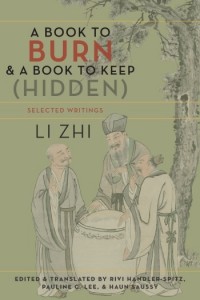
時 間:2016年6月
作 者:Li Zhi(李贄),Edited by Rivi Handler-Spitz, Pauline Lee, and Haun Saussy
出版單位:New York: Columbia University Press
內容簡介
Conventions and Abbreviations
Introduction
Selections from A Book to Burn (Fenshu)
Part I: Prefaces
Part II: Letters
Part III: Miscellaneous Writings: Short Essays and Discourses
Part IV: Readings of History
Part V: Poetry
Selections from Another Book to Burn (Xu fenshu)
Part I: Prefaces
Part II: Letters
Part III: Miscellaneous Writings: Short Essays and Discourses
Part IV: Poetry
From A Book to Keep (Hidden) (Cangshu) (1599)
The Historical Record
Chronology of Li Zhi’s Life
Bibliography
List of Contributors
11、Roaming into the Beyond: Representations of Xian Immortality in Early Medieval Chinese Verse
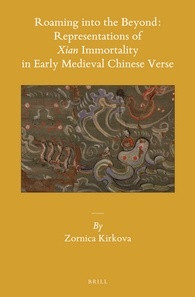
時 間:2016年3月
作 者:Zornica Kirkova
出版單位:Leiden: Brill
內容簡介
Introduction
1 Religious and Literary Background
The Ideal of Xian-ship
A Historical Survey of Immortality Cults
Methods of Achieving Immortality
Prose Accounts of Immortality
Poetry on Immortality
Literary Criticism on Youxian Verse
2 The Dramatis Personae
Xi Wangmu
The Yellow Emperor
Laozi
Wangzi Qiao, Master Redpine, and Other Immortals
Transformations of the Pantheon
3 A Phenomenology of Immortals
Images of Immortals from the Han to the Eastern Jin
Transformation and Transcendence
The Visual Image of Immortals
The Far-Off Journey
Levitation and Fantastic Steeds
Spontaneity and Swiftness
Immortals’ Feasts
The Hidden Immortal
Celestial Splendor and Courtly Refinement: The Southern Dynasties
Images of Eternity
4 The World of the Immortals
Topography
Cosmic Mountains and Paradise Gardens
The Lands of the Shangqing Revelations
Paradise on Earth
The Court Dulcification of Otherworldly Nature
5 The Way to Immortality
Journeys to Other Worlds
The “Yuanyou” Poem of the Chuci
The Distant Journey in the Han Fu
The Journey Theme in the Yuefu Tradition
The Distant Journey as a State of Mind
Sun Chuo’s Visionary Ascent of the Tiantai Mountains
The Elixir Way
Alchemical Formulas and Sacred Scriptures
6 Immortality in the Context of the Human World
The Juxtaposition of the Two Realms in the Chuci Tradition
Melancholy and Yearning for Immortality during the Third and Fourth Centuries
Social Engagement, Hedonism, or Immortality Seeking?
Honoring the Immortals
Feasting Songs
Tableaus of Higher Realms
The Earth Below Is Out of Sight
Poetry on Immortality and Personal Religious Pursuits
Youxian Poetry and Daoist Ritual Hymns
Conclusion
12、中國思想史研究第37號
時 間:2016年7月
出版單位:京都:京都大學中國哲學史研究會
內容簡介
『管子』の心術と內業再探(金東鎭)
『道教義樞』序文に見える「王家八并」をめぐって:道教教理學と三論學派の論法(麥谷邦夫)
『春秋左傳讀』に于ける章太炎の思考法と左傳觀(田訪)
13、永楽政権成立史の研究
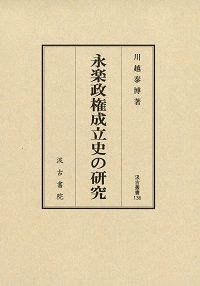
時 間:2016年9月
作 者:川越泰博 著
出版單位:東京:汲古書院
內容簡介
序語
第一章 開國功臣家と靖難の役
第二章 靖難の役と云南諸衛
第三章 靖難の役と貴州?湖広
第四章 靖難の役と河南?浙江?江西
第五章 永楽政権の成立と復活人事
第六章 永楽政権と雒僉事件
第七章 燕王府官から永楽官僚結語
14、近代の日本人と孫文
時 間:2016年8月
作 者:中山義弘
出版單位:東京:汲古書院
內容簡介
第1章 孫文における國民統合の論理構造
第2章 橘樸の中國認識と孫文思想理解
第3章 萱野長知の孫文認識と孫文思想理解
第4章 宮崎滔天の中國認識と孫文認識?孫文思想理解
第5章 徳富蘇峰と宮崎滔天、蘇峰の中國認識
第6章 北一輝と中國革命─北の中國認識と孫文観
第7章 吉野作造と中國革命 ─ 吉野の中國認識と孫文観
第8章 孫文と梅屋莊吉?頭山満?山田兄弟?南方熊楠
15、李朝時代の外國語教育時間
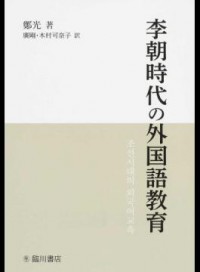
時 間:2016年7月
作 者:鄭光 著,廣剛、木村可奈子 翻譯
出版單位:京都:臨川書店
內容簡介
第1章 朝鮮時代の學校教育と訳官教育
第2章 司訳院の設置と外國語教育
第3章 中國語教育——漢學
第4章 モンゴル語教育——蒙學
第5章 日本語教育——倭學
第6章 女真語と満州語教育——女真學と清學
第7章 結語
16、墮落と復興の近代中國仏教:日本仏教との邂逅とその歴史像の構筑時間
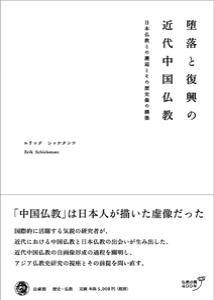
時 間:2016年7月
作 者:Erik Schicketanz 著
出版單位:京都:法藏館書店
內容簡介
序論
第一章 明治?大正期における日本人仏教者の中國仏教観とその思想的背景
第一節 課題の設定
第二節 近代日本人仏教者の中國仏教観と廃墟
第三節 過去と現在の中國仏教
第四節 日本人仏教者の中國仏教観と日本仏教の使命
第五節 日本仏教に基づいた中國仏教理解
第六節 中國に渡った日本人仏教者の宗派意識
第七節 昭和初期における鈴木大拙の中國滯在
第八節 小結
第二章 近代中國における仏教墮落論
第一節 課題の設定
第二節 先行研究と中國仏教墮落問題
第三節 近代仏教者敬安における仏教衰頹論
第四節 末法思想とその役割
第五節 末法意識と近代中國の危機
第六節 亡國危機と経世仏學
第七節 末法のナショナライゼーション
第八節 太虛における墮落言論と宗派概念
第九節 宗派と仏教の墮落と復興
第十節 小結
第三章 近代中國仏教における宗派概念とそのポリティクス
第一節 課題の設定
第二節 宗派概念と近代日中仏教交流
第三節 近代日本の中國仏教史研究と近代
第四節 近代日本の中國仏教史研究と宗派概念
第五節 境野黃洋の中國仏教史研究
第六節 境野黃洋以后の仏教史研究
第七節 中國仏教と宗派概念
第八節 近代中國仏教における日本的宗派概念の受容
第九節 中國における凝然の宗派モデルの普及
第十節 民國期仏教界における中國仏教史認識と近代日本の仏教研究
第十一節 宗派中心的な仏教史の語りの転用
第十二節 根強い宗派概念
第十三節 小結
第四章 民國期の密教復興
第一節 課題の設定
第二節 密教復興に關する先行研究
第三節 民國期における密教復興の展開
第四節 日本的中國仏教史観と密教復興
第五節 先行研究における王弘愿の位置づけ
第六節 王弘愿の生涯と震旦密教重興會の興廃
第七節 王弘愿の思想的背景
第八節 王弘愿における平等概念と密教思想
第九節 太虛派との論爭
第十節 中國人仏教者における日本仏教観
第十一節 戒律を破壊する日本密教
第十二節 戒律破壊による仏教制度の破壊
第十三節 太虛の改革仏教體制における密教の位置づけ
第十四節 震旦密教重興會からの反論
第十五節 小結
結論
17、Chow Chop Suey: Food and the Chinese American Journey
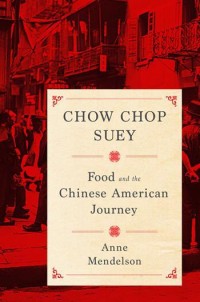
時 間:November, 2016
作 者:Anne Mendelson
出版單位:New York: Columbia University Press
內容簡介
Chinese food first became popular in America under the shadow of violence against Chinese aliens, a despised racial minority ineligible for United States citizenship. The founding of late-nineteenth-century “chop suey” restaurants that pitched an altered version of Cantonese cuisine to white patrons despite a virulently anti-Chinese climate is one of several pivotal events in Anne Mendelson’s thoughtful history of American Chinese food. Chow Chop Suey uses cooking to trace different stages of the Chinese community’s footing in the larger white society.
Mendelson begins with the arrival of men from the poorest district of Canton Province during the Gold Rush. She describes the formation of American Chinatowns and examines the curious racial dynamic underlying the purposeful invention of hybridized Chinese American food, historically prepared by Cantonese-descended cooks for whites incapable of grasping Chinese culinary principles. Mendelson then follows the eventual abolition of anti-Chinese immigration laws and the many demographic changes that transformed the face of Chinese cooking in America during and after the Cold War. Mendelson concludes with the post-1965 arrival of Chinese immigrants from Taiwan, Southeast Asia, and many regions of mainland China. As she shows, they have immeasurably enriched Chinese cooking in America but tend to form comparatively self-sufficient enclaves in which they, unlike their predecessors, are not dependent on cooking for a white clientele.
About the Author
Anne Mendelson is a culinary historian and freelance writer specializing in food-related subjects. She has worked as editorial consultant and collaborator on several cookbooks and has contributed entries to the Oxford Encyclopedia of Food and Drink in America (2005). She is the author of Milk (2008) and Stand Facing the Stove (1996).
18、The Philosophy of the Mòzi: The First Consequentialists
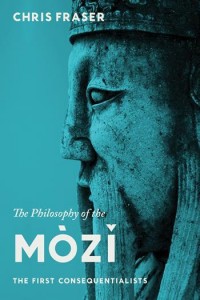
時 間:September, 2016
作 者:Chris Fraser
出版單位:New York: Columbia University Press
內容簡介
Preface
Acknowledgments
Introduction
1. Order, Objectivity, and Efficacy
2. Epistemology and Logic: Drawing Distinctions
3. Political Theory: Order Through Shared Norms
4. Heaven: The Highest Ethical Model
5. Ethics: The Benefit of All
6. Inclusive Care: For Others as for Oneself
7. Motivation: Changing People in a Generation
8. War and Economics
Epilogue
19、Figures of Buddhist Modernity in Asia
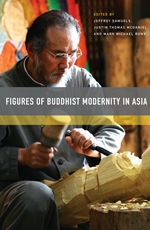
時 間:June, 2016
作 者:Editet by Jeffrey Samuels, Justin Thomas McDaniel and Mark Michael Rowe
出版單位:Honolulu: University Of Hawai’i Press
內容簡介
This book introduces contemporary Buddhists from across Asia and from various walks of life. Eschewing traditional hagiographies, the editors have collected sixty-six profiles of individuals who would be excluded from most Buddhist histories and ethnographies. In addition to monks and nuns, readers will encounter artists, psychologists, social workers, part-time priests, healers, and librarians as well as charlatans, hucksters, profiteers, and rabble-rousers—all whose lives reflect changes in modern Buddhism even as they themselves shape the course of these changes.
The editors and contributors are fundamentally concerned with how individual Buddhists make meaning and display this understanding to others. Some practitioners profiled look to the past, lamenting the transformations Buddhism has undergone in recent times, while others embrace these. Some have adopted a “new asceticism,” while others are eager to explore different religious traditions as they think about their own ways of being Buddhist. Arranging the profiles according to these themes—looking backward, forward, inward, and outward—reveals the value of studying individual Buddhists and their idiosyncratic religious backgrounds and attitudes, thus highlighting the diversity of approaches to the practice and study of Buddhism in Asia today. Students and teachers will welcome sections on further readings and additional tables of contents that organize the profiles thematically, as well as by tradition (Theravada, Mahayana, Vajrayana), region, and country.
About the Author
Jeffrey Samuels is professor of religious studies at Western Kentucky University.
Justin Thomas McDaniel is professor and chair of religious studies at the University of Pennsylvania.
Mark Michael Rowe is associate professor in the Department of Religious Studies, McMaster University.
20、Information, Territory, and Networks: The Crisis and Maintenance of Empire in Song China
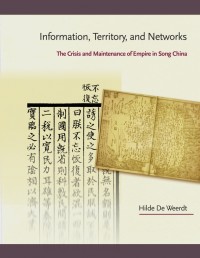
時 間:2015年
作 者:Hilde De Weerdt
出版單位:Cambridge: Harvard University Press
內容簡介
The occupation of the northern half of the Chinese territories in the 1120s brought about a transformation in political communication in the south that had lasting implications for imperial Chinese history. By the late eleventh century, the Song court no longer dominated the production of information about itself and its territories. Song literati gradually consolidated their position as producers, users, and discussants of court gazettes, official records, archival compilations, dynastic histories, military geographies, and maps. This development altered the relationship between court and literati in political communication for the remainder of the imperial period. Based on a close reading of reader responses to official records and derivatives and on a mapping of literati networks, the author further proposes that the twelfth-century geopolitical crisis resulted in a lasting literati preference for imperial restoration and unified rule.
Hilde De Weerdt makes an important intervention in cultural and intellectual history by examining censorship and publicity together. In addition, she reorients the debate about the social transformation and local turn of imperial Chinese elites by treating the formation of localist strategies and empire-focused political identities as parallel rather than opposite trends.
Author Bio
Hilde De Weerdt is Professor of Chinese History at Leiden University
資料來源:臺北《漢學研究通訊》、臺北《國家圖書館電子報》等 陳友冰輯


